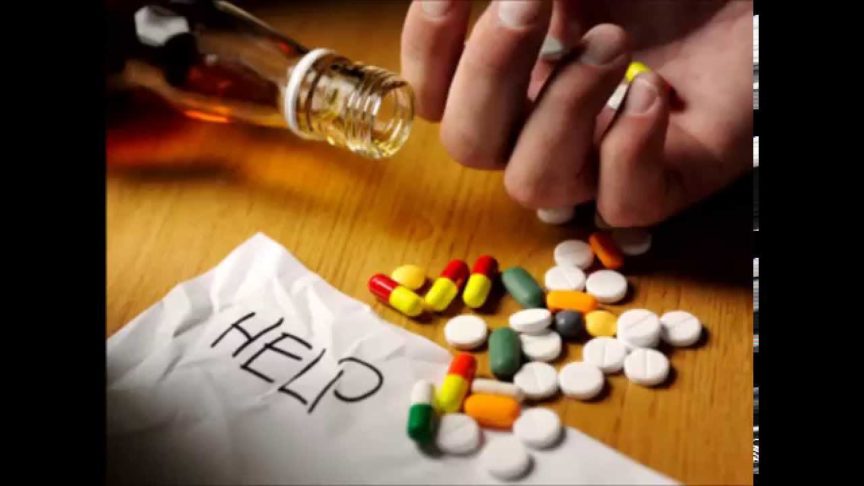A 16-year-old girl is found in her bedroom unresponsive by her mother. The patient had texted her friends earlier in the day, telling them that she was going to “go away forever.” The mother reports that her daughter has a history of depression and several episodes of self-harm but no previous overdose attempts. Her mother believes that the patient is distraught as a result of a recent breakup with her boyfriend. EMS personnel found several empty pill bottles on the patient’s bed.
On arrival in the emergency department, the patient’s mental status is significantly altered. Vital signs include HR 135, BP 90/50, RR 35, temperature 37.9 °C, SpO2 99% on room air. You realise that this patient’s altered level of awareness, increased temperature and location beside multiple pill bottles is concerning for a mixed toxin ingestion.
[bg_faq_start]History and physical
History:
Important elements of the history in patients presenting with toxic ingestions include their previous medical history – particularly any psychiatric conditions – as well as any previous or current medications or drug use, as this may provide important information regarding any drugs the patient may have access to. Other important elements include social situation, acute stressors, and any previous suicide attempts. It is also essential to know when the patient was last seen normal. (1)
Paramedics are often able to provide additional information about the patient’s environment, including substances and pill bottles surrounding the patient that can facilitate toxidrome determination and dose estimation.
Physical exam:
All patients with suspected toxic ingestions should undergo a full physical examination. Beyond usual exam findings, additional findings that are helpful in toxidromes include signs of self-harm in the form of healed scars and track marks from injection drug use. Pupils that are dilated or pinpoint and skin that is dry, diaphoretic, or flushed may help differentiate toxic ingestions.1[bg_faq_end] [bg_faq_start]
Toxidromes
Common toxidromes include sympathomimetic, anti-cholinergic, sedative-hypnotic, and opioid.
They can be thought of as 2 larger classes, the ‘fast and furious’ and ‘downers’:
- Fast and furious: Sympathomimetic and Anticholinergic
Heart rate and temperature are increased in both sympathomimetic and anticholinergic toxidromes. Patients with sympathomimetic ingestions (e.g. cocaine) will have sweaty skin, hypertension and dilated pupils. Patients with anticholinergic toxidromes (e.g. baclofen) will have dry skin and agitation.1 These patients with later toxidrome are often described as ‘mad as a hatter, blind as a bat, red as a beat, and dry as a bone’.
In patients with apparent ‘fast and furious’ toxidromes, it is important to consider the alternate diagnoses of neuroleptic malignant syndrome and serotonin syndrome. Typical and atypical antipsychotics can cause neuroleptic malignant syndrome, which is characterised by increased temperature, diaphoresis, and muscle rigidity. Serotonin syndrome, which causes similar symptoms, can be caused by a variety of substances, including selective serotonin reuptake inhibitors and MDMA.1
- Downers: Sedative-Hypnotics and Opioids
Patients with sedative-hypnotic (e.g. benzodiazepine) or opioid (e.g. heroin, hydromorphone, or morphine) toxidromes are slow and somnolent. They will often have a slowed heart rate and low blood pressure. It is important to rule out hypoglycaemia in these patients, as low blood sugar can present similarly.1[bg_faq_end] [bg_faq_start]
Lab Tests
Basic laboratory investigations in patients who present with suspected toxic ingestions include CBC, BUN, creatinine, electrolytes, and glucose. A VBG may help in detecting potential metabolic or respiratory compromise. It can be used in combination with the anion gap to point toward toxic causes of metabolic acidosis (e.g. methanol). Additional helpful tests include serum ethanol, acetaminophen, and aspirin levels; serum osmolality, which, when raised, can point to the presence of toxic alcohols; and drug levels for medications that the patient may have had access to (e.g. seizure medications and digoxin).1
A screening ECG is essential in investigating a suspected toxic ingestion, as typical signs of overdose (e.g. widened QRS in tricyclic antidepressant ingestion) can be detected in this way. In the ‘fast and furious’ toxidrome, an initial ECG can point to cardiac consequences of overdose, such as ST segment elevation secondary to coronary vasospasm in cocaine overdose.2
Urine toxicology screens are used sparingly in the ED, as they are prone to both false negatives and false positives and do not necessarily indicate acute ingestions. This is because many substances produce positive urine toxicology screens several days or weeks following ingestion. Urine toxicology may be useful, however, in cases of suspected child abuse or neglect, medico-legal cases, and cases of undifferentiated patients not responding to initial treatments but thought to have a toxic ingestion as the cause of their presentation.1[bg_faq_end] [bg_faq_start]
Management
- Protect yourself: Healthcare providers must be aware that toxic substances may be present on a patient’s skin or clothes, and universal precautions should be used to avoid contamination. Patients who have used injection drugs may have needles or other potentially dangerous gear on their person or among their belongings.
- ABCs: As with any patient, airway, breathing, and circulation are the priority in the patient with toxic ingestions. Careful examination must be performed to ensure the patient is able to maintain and protect his or her airway. In most cases, there should not be progressive airway oedema. However, there is potential for this in patients who have ingested caustic agents like sulphuric acid.3,4 Monitoring and auscultation may reveal tachypnea or bradypnoea, which may point to a toxidrome. Detection of abnormal lung sounds may point to an inhalation or non-toxic cause of the patient’s presentation. Abnormalities of blood pressure and/or heart rate can be further clues to a toxic ingestion, and efforts should be made to normalise these vital signs when possible.
- Decontamination: If the patient is obviously covered in a toxin, remove it. Patients may benefit from internal decontamination with gastric lavage or whole bowel irrigation, but both procedures are high-risk and should be performed under the direction of your local poison control centre. Patients who can swallow or have an endotracheal tube in place and have ingested a toxin amenable to adsorption may be treated with activated charcoal.5
- Antidote: The treatment for most toxidromes is supportive, but some specific antidotes exist for known toxins. These include the following:1
- naloxone for opioid overdose
- N-acetylcysteine (NAC) for acetaminophen overdose
- sodium bicarbonate for tricyclic antidepressant overdose
- hydroxycobalamine for cyanide toxicity
In addition, several more antidote-type treatments options exist for general toxin classes. These include:
- Lipid emulsion therapy: This intravenous antidote binds lipophilic substances in the blood stream, forcing liver metabolism of the toxic substance.6
- Dialysis: Directly removes certain toxins (especially lithium and ethylene glycol) that are usually renally cleared.7
In most cases of toxic ingestion, particularly if the substance is unusual or the ingestion unknown, it is wise to contact your local poison control centre. Toxicologists there can provide up-to-date treatment recommendations and follow the clinical course of the patient with toxic ingestion.[bg_faq_end]
Case review
In the case of our 16-year-old patient, a serum toxicology screen was performed, which showed high levels of aspirin and acetaminophen. Her level of awareness rapidly decreased, and she was intubated in the ED. Poison control was called, and the patient was started on N-acetylcysteine (NAC) in an attempt to avoid liver failure and the need for transplant. Dialysis for ASA toxicity was also initiated due to this patient’s extreme presentation with neurologic dysfunction.
A summary infographic has been created by Kelly Lien & Dr. Alvin Chin below:
This post was copyedited by Rob Carey(@_RobCarey)





